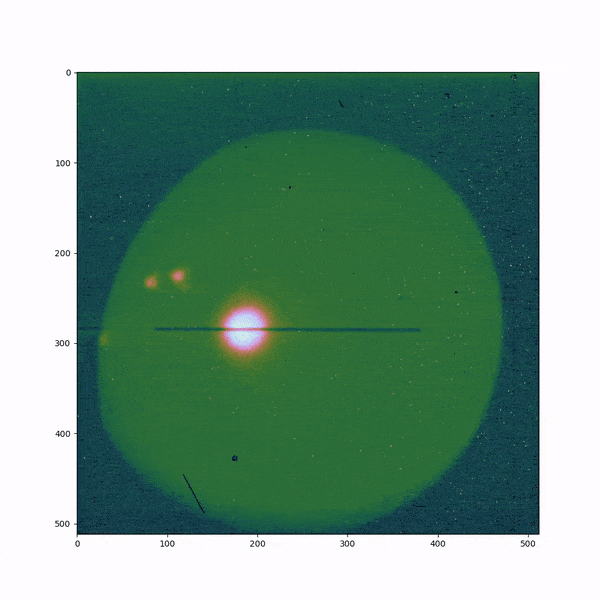Scientists create most detailed map of Uranus' mysterious auroras
Scientists have imaged the whole globe of Uranus in the infrared part of the light spectrum for the first time, hoping to shed light on the planet's mysterious auroras and weird magnetic field.
The British-led team did so during a three-day campaign that was livestreamed publicly last week for the whole world to see. The scientists, based at the University of Leicester in the U.K., used NASA's Infrared Telescope Facility (IRTF) in Hawaii to look at the odd ice giant that orbits the sun 19 times farther away than Earth does.
Just like on Earth, auroras on Uranus are triggered by the interaction of the solar wind, the stream of charged particles emanating from the sun, with the planet's magnetic field. But because so much is different about Uranus compared to our planet, these auroras behave very differently than the Earth's famous northern and southern polar lights.
Related: Photos of Uranus, the tilted giant planet
For example, the axis around which Uranus rotates is nearly perpendicular to the sun. That means the planet essentially rolls around the sun on its side with its poles facing the star nearly directly for an entire quarter of the planet's long year, which lasts 84 Earth years.
On top of that, Uranus' magnetic poles are not aligned with its geographical poles, like on Earth, Jupiter or Saturn, but are tilted by 60 degrees away from them. As a result, Uranus' auroras don't light up the sky above the planet's geographical poles but at very odd places.
"The northern aurora actually extends from the northern hemisphere towards the equator, and even dips past into the southern hemisphere," Emma Thomas, an astronomy Ph.D. student at the University of Leicester who led the observations, told Space.com. "If you want to map the aurora, you can't just look at the top of the planet, you have to look across its entire surface."
Get the world’s most fascinating discoveries delivered straight to your inbox.
To image the entire surface of Uranus, the scientists split their observations into three eight-hour windows spread over three days. They had to time each observation window to match Uranus' 17-hour rotation period. Once the data are combined, the result will be the most detailed map of the distant planet's surface in the infrared part of the spectrum.
"We want to understand where on Uranus are bright parts," Thomas said. "Uranus itself will be illuminated in the current day glow. Anything that is above that level, that's either caused by internal thermal processes or the aurora. By measuring the density of the particles above Uranus, we will be able to tell which one it is."

Previously, the surface of Uranus has only been imaged in the ultraviolet part of the spectrum. NASA's mission Voyager 2 swung past the planet briefly in 1986, taking the first and so far only set of up-close images of the strange planet's surface and the environment around. In 2011, the Hubble Space Telescope for the first time detected auroras glimmering above the surface of Uranus, each covering an area larger than Earth.
But scientists still know very little about these displays and the driving forces behind them, said Thomas.
"We still don't fully understand the magnetosphere of Uranus and its interaction with the solar wind," Thomas said. A magnetosphere is a region around a planet dominated by its magnetic field. "By mapping the auroras, we can get a better comprehension of the solar wind's interaction with the magnetosphere and from that, we can get a better idea of how the magnetic lines are oriented."
Scientists know that the magnetic field on Uranus behaves in rather strange ways, with magnetic lines frequently disconnecting and reconnecting within a single day, according to a 2017 study.
Understanding how these auroras vary within a single day could provide new insights into the mechanisms driving this erratic magnetic field, Thomas said.
The auroras, however, don't vary only with the time of the day but also with seasons of the year, depending which side of the planet is currently illuminated by the sun and which side is submerged in darkness. But as it takes 84 Earth years for Uranus to complete one rotation around the sun, scientists are only very slowly building up their understanding of these seasonal changes.
"At the moment, we have only about a season's worth of data on Uranus," Thomas said. "Everything that we can collect now and in the next 20 and 40 years is really crucial to fully understand how this planet's auroras work."
Follow Tereza Pultarova on Twitter @TerezaPultarova. Follow us on Twitter @Spacedotcom and on Facebook.





